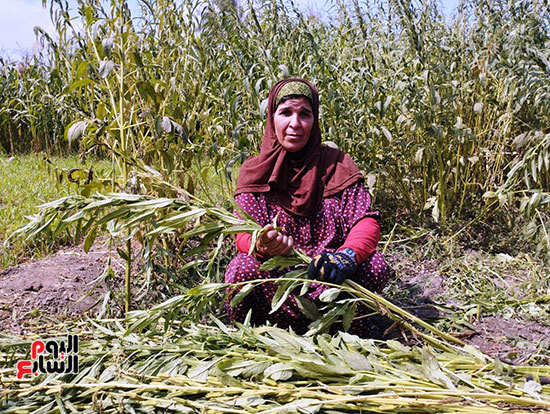CAIRO - 3 September 2022: The sesame harvest season began in the fields of Sharqia Governorate, amid great joy among farmers and their children, to harvest the golden product, which witnessed an unprecedented turnout from farmers than the previous years.
The total area cultivated with sesame this year reached 20,000 acres. Sesame is one of the profitable crops with economic returns and is not financially costly to cultivate. Besides its great health benefits, sesame enters into a large number of industries such as: sweets, baked goods and halva, in addition to the production of sesame oil.
Engineer Ashraf Al-Demerdash, Director General of Extension at the Directorate of Agriculture in the Eastern Province, said that sesame cultivation is concentrated in the centers of "Bilbeis - Abu Hammad - Mashtoul Al-Suq", and in the past period, the areas planted with sesame increased because it is a profitable and inexpensive crop to cultivate.
"If the farmer pays attention to it, he will have a profitable economic return with him at the end of the year," he said, adding that the period of cultivating the sesame crop is only four months, as it is a 120-day-old crop, its cultivation starts from April 15 and ends on May 30.
He explained that currently the crop is in the stage of maturity and when the sticks begin to dry, the harvest is done, and the harvest is carried out on August 15 in the cultivated areas early, and the feddan costs 4 kilos of seeds.
The average price per kilo does not exceed 35 pounds, and at the end of the season the average production per acre ranges between 500 to 600 kilos, the selling price ranges 25 pounds.
The Director General of Guidance explained that sesame is used in the manufacture of sweets and baked goods, oil extraction and is used in the manufacture of tahini, halva, and oil. As well as being a first-class oil crop for oils and sesame husks used in the fodder industry because it is rich in fibres.

Comments
Leave a Comment